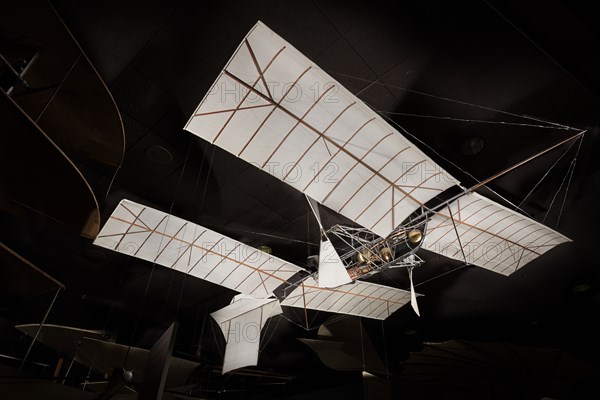
Sujet
Langley Aerodrome Number 5, 1896. Creator: Smithsonian Institution.
Légende
Model of the unpiloted, tandem-wing experimental aircraft built and tested by Samuel P. Langley. One one-horsepower, one-cylinder steam engine turning two pusher propellers via geared transmission system. Silk covering. Natural fabric finish; no sealant or paint of any kind. Samuel Pierpont Langley became the third Secretary of the Smithsonian Institution in 1887. In 1891, he began experiments with large, tandem-winged models powered by small steam and gasoline engines he called aerodromes. After several failures with designs that were too fragile and under-powered to sustain themselves, Langley had his first genuine success on May 6, 1896, with his Aerodrome Number 5. It made the world's first successful flight of an unpiloted, engine-driven, heavier-than-air craft of substantial size. It was launched from a spring-actuated catapult mounted on top of a houseboat on the Potomac River near Quantico, Virginia. Two flights were made on May 6, one of 1,005 m (3,300 ft) and a second of 700 m (2,300 ft), at a speed of approximately 40 kph (25 mph). On both occasions, the Aerodrome Number 5 landed in the water, as planned, because, in order to save weight, it was not equipped with landing gear.
Crédit
Photo12/Heritage Images/Heritage Art
Notre référence
HRM21A87_472
Model release
NA
Property release
NA
Licence
Droits gérés
Format disponible
144,0Mo (4,7Mo) / 73,6cm x 49,0cm / 8688 x 5792 (300dpi)